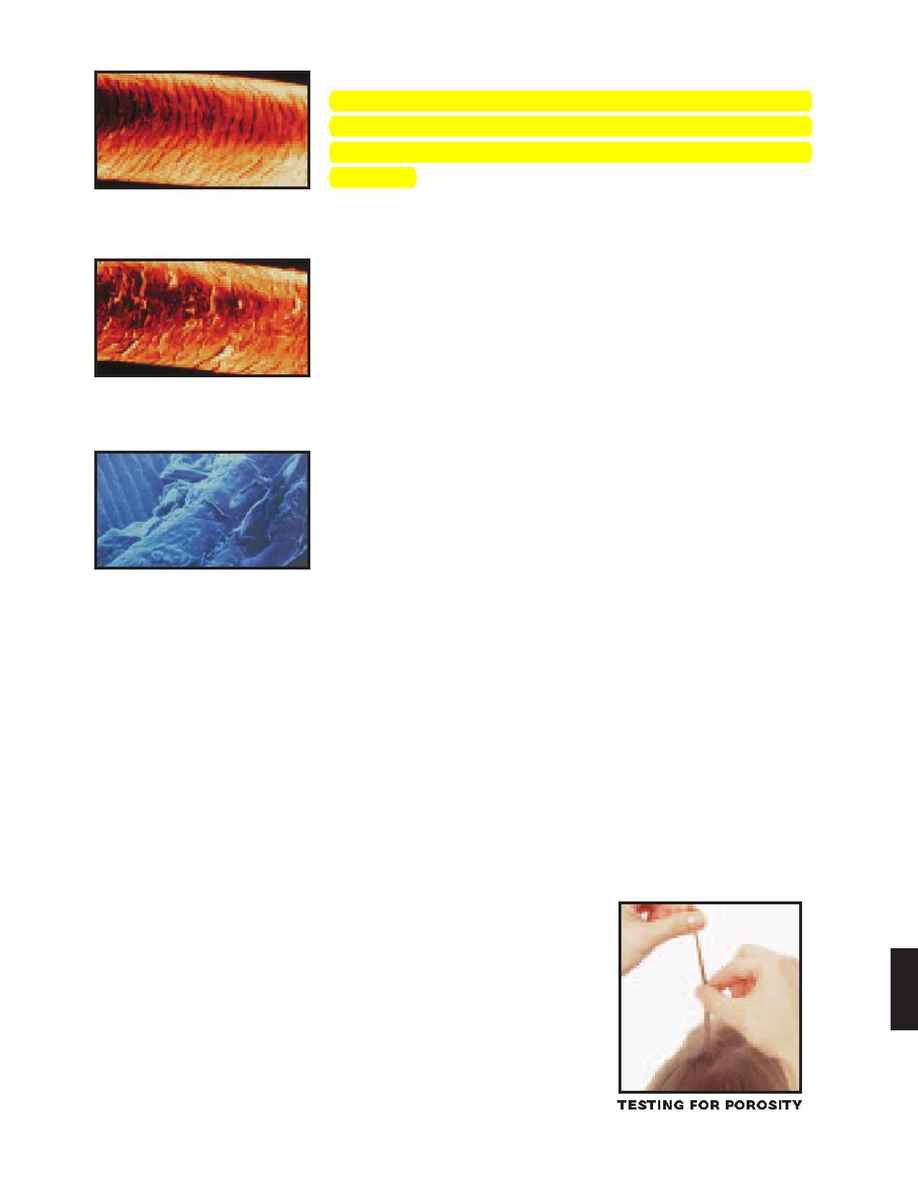
With resistant porosity, the cuticle layers are smooth, tightly
packed and compact. Color absorption in this case may take longer
or you may have to apply additional pigment to ensure color
absorption.
With average or normal porosity, the cuticle is slightly raised,
thereby accepting color products easily.
The condition in which the cuticle is lifted or missing is referred to
as extreme porosity. With this type of porosity, the hair may accept
the color intensely or it may fade quickly.
In many instances, you will note that a client has more than one type of porosity or what is called
uneven porosity. Clients who have had previous chemical services offer examples of uneven poros-
ity. They may exhibit extreme porosity on the mid-strand or ends and average porosity on the new
growth.
Often clients with long hair may exhibit uneven or variations in porosity because the
hair on the ends has been more exposed to environmental elements.
These elements coupled
with repeated use of shampoo and styling products can leave the ends with extreme porosity. Uneven
porosity happens not only along the hair strand but throughout the head as well. An example of this
would be a client with highlighted hair. The hair that has been lightened may be one type of poros-
ity, while the hair that is natural may be another type.
In cases of uneven or extreme porosity, a
filler may be required to even out the porosity prior to the color service to ensure even color
absorption.
You will learn more about fillers later in the chapter.
To determine porosity, select a small section of hair. Hold the ends
and slide your thumb and forefinger along the hair strand toward
the scalp. The more rough the hair feels and the easier the hair
backcombs, the greater the porosity.
HAIR COLORING
1
3
503
TESTING FOR POROSITY
